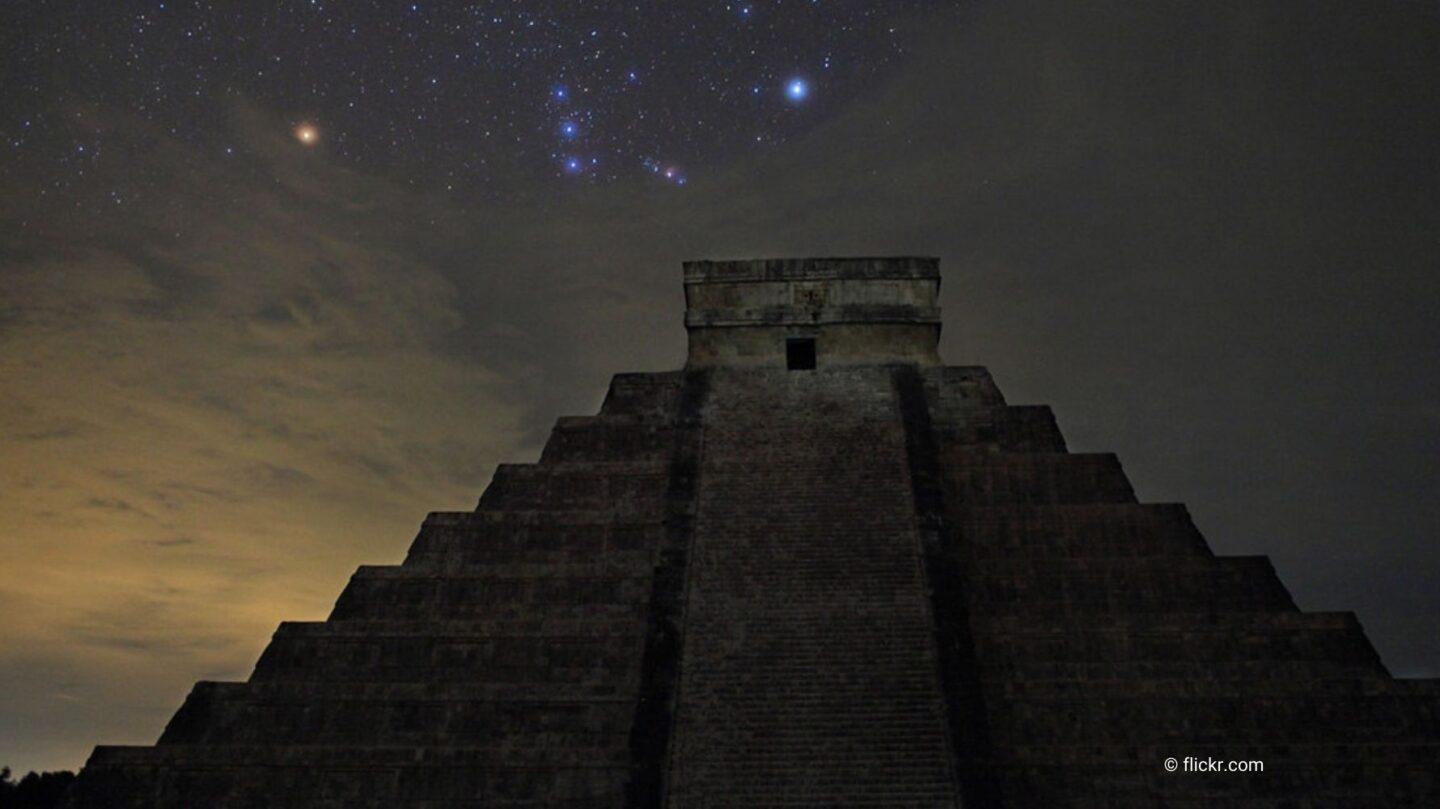The Maya: Masters of the Heavens
The ancient Maya civilization, flourishing in Mesoamerica from around 2000 BCE to the 16th century CE, was renowned for its advanced understanding of astronomy. Through careful observation of the skies, the Maya developed intricate calendars, predicted celestial events, and aligned their architecture with the movements of heavenly bodies. For the Maya, astronomy was not just a science but a deeply spiritual practice, tied to their beliefs about time, the cosmos, and the gods.
Observing the Celestial Cycles
The Maya were meticulous skywatchers, recording the movements of the sun, moon, planets, and stars with remarkable accuracy. Using simple tools such as sightlines, shadow casting, and natural landmarks, they tracked celestial events over long periods. This allowed them to identify patterns and predict phenomena such as solar eclipses, solstices, and equinoxes.
Venus held particular significance for the Maya, as it was associated with the god Kukulkan (or Quetzalcoatl). They tracked Venus’s movements with precision, incorporating its cycles into their calendar and using them to guide agricultural and military decisions. The Dresden Codex, one of the surviving Maya manuscripts, contains detailed Venus tables that illustrate their astronomical expertise.
The Maya Calendar System
The Maya developed one of the most sophisticated calendar systems in the ancient world, which was deeply rooted in their astronomical observations. Their system combined three interlocking calendars:
- The Tzolk’in: A 260-day ritual calendar used for religious and ceremonial purposes.
- The Haab’: A 365-day solar calendar that approximated the solar year, divided into 18 months of 20 days each, plus a 5-day “unlucky” period known as Wayeb’.
- The Long Count: A chronological system that tracked longer cycles of time, often used to record historical and mythological events.
These calendars were used together to mark important dates and predict celestial alignments. The Long Count, in particular, gained modern attention during the lead-up to 2012, when its end-date sparked popular theories about a supposed apocalypse.
Astronomy and Architecture
The Maya integrated their astronomical knowledge into their architecture, creating cities that functioned as cosmic observatories. Structures such as pyramids, temples, and ball courts were aligned with celestial events, emphasizing their connection to the heavens.
One of the most famous examples is El Castillo (Temple of Kukulkan) at Chichen Itza. During the equinoxes, the setting sun casts a shadow on the pyramid’s steps that resembles a serpent slithering down its side. This phenomenon reflects the Maya’s deep understanding of solar movements and their ability to integrate it into architectural design.
Other notable sites, such as the Caracol observatory in Belize, were built to track the movements of Venus and other celestial bodies. These structures highlight the Maya’s ability to combine science, religion, and art into a unified worldview.
The Legacy of Maya Astronomy
The Maya’s astronomical achievements were extraordinary, rivaling those of ancient Egypt and Mesopotamia. Their ability to predict celestial events and create precise calendars demonstrates their advanced understanding of the cosmos. This knowledge was deeply intertwined with their culture, influencing agriculture, religion, and governance.
Although much of their civilization was lost after the Spanish conquest, the legacy of Maya astronomy endures. Modern researchers continue to study Maya texts, monuments, and artifacts to uncover new insights into their celestial knowledge. Their contributions remain a testament to humanity’s enduring fascination with the stars.
A Civilization Written in the Stars
For the Maya, the stars were more than distant points of light; they were guiding forces that shaped their lives and beliefs. Their mastery of astronomy reflects not only their scientific prowess but also their profound connection to the universe. As we continue to explore their discoveries, the Maya remind us of the timeless human desire to understand and predict the mysteries of the cosmos.
